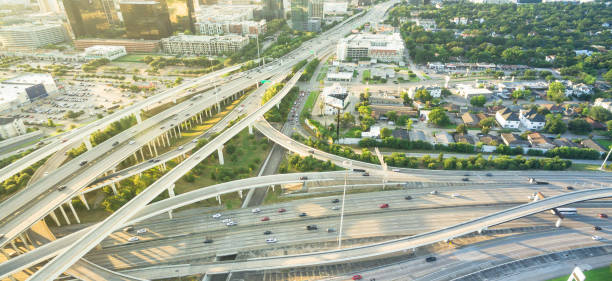Houston’s roads can be hazardous. Accidents happen, and certain intersections are riskier than others. You deserve to feel safe and informed. Understanding these accident hotspots helps you navigate with confidence. Whether you are a driver, cyclist, or pedestrian, knowing where incidents frequently occur empowers you to take action. This blog highlights Houston’s most dangerous intersections. It explains why they are risky and, most importantly, how you can stay safe. You might need guidance from an experienced Houston car accident attorney if you find yourself in a crash. But prevention is key. By staying alert and adopting safe practices, you can reduce the odds of an accident. Your safety and well-being are what matter most. So, let’s explore these critical junctions and arm you with practical tips for a safer journey. Remember, awareness saves lives, and the road to safety begins with you.
The Most Dangerous Intersections
Some intersections pose more risks than others. Here is a list of Houston’s most dangerous intersections based on accident data:
| Intersection | Annual Accidents | Key Hazards |
| Bissonnet Street & S. Gessner Road | 120 | High traffic volume |
| Westheimer Road & Highway 6 | 110 | Multiple lanes merging |
| Greens Road & I-45 | 105 | Poor visibility |
These intersections rank high in accident frequency due to factors like high traffic volume and poor visibility. Recognizing these hotspots is the first step toward accident prevention.
Understanding the Risk Factors
Several elements contribute to the dangers at these intersections. High traffic volume increases the risk of crashes. Multiple lanes can confuse drivers. Poor visibility leads to missed signals and sudden stops. By identifying these factors, you can adjust your driving habits.
For detailed reports and statistics, you can visit the Texas Department of Transportation website. They provide valuable insights into traffic patterns and safety measures.
Safety Tips for All Road Users
- Stay Alert: Distractions are dangerous. Stay focused on the road.
- Observe Traffic Signals: Follow lights and signs without exception.
- Maintain Safe Distance: Keep space between your vehicle and others.
These tips apply whether you walk, cycle, or drive. A little caution goes a long way in ensuring safety.
Steps for Cyclists
Cyclists face unique challenges. Use bike lanes when available. Wear a helmet and visible clothing. Follow the same rules as vehicles—stop at lights and yield when necessary. Your visibility on the road is crucial.
Guidance for Pedestrians
Pedestrians should cross at designated intersections. Avoid distractions like phones. Make eye contact with drivers before crossing. Wait for the signal to walk. These simple actions can protect you from harm.
When Accidents Occur
Despite precautions, accidents can happen. Knowing what to do afterward is vital. First, ensure your safety and the safety of others. Then, call emergency services if needed. Document the scene with photos and gather witness information. This information can be useful if legal action is necessary.
The Houston Police Department provides resources for reporting and handling accidents. They can guide you through the process.
Your Role in Road Safety
Safe roads begin with each person’s commitment to responsible behavior. Stay informed, stay cautious, and contribute to a safer community. Your actions can influence others, creating a ripple effect of safety.
Understanding and respecting these accident hotspots plays a crucial role in reducing accidents. Support from community members like you is key to making Houston’s roads safer. By staying alert and informed, you help build a safer environment for everyone.



